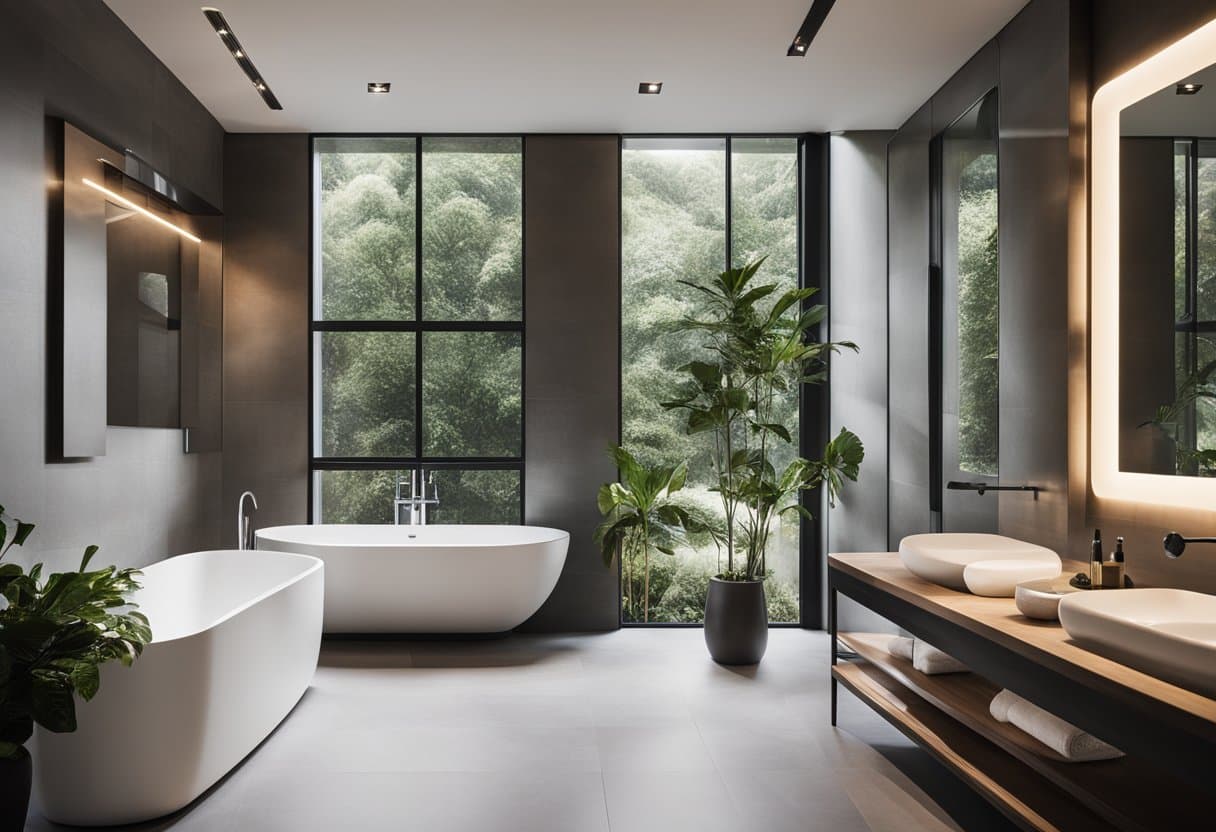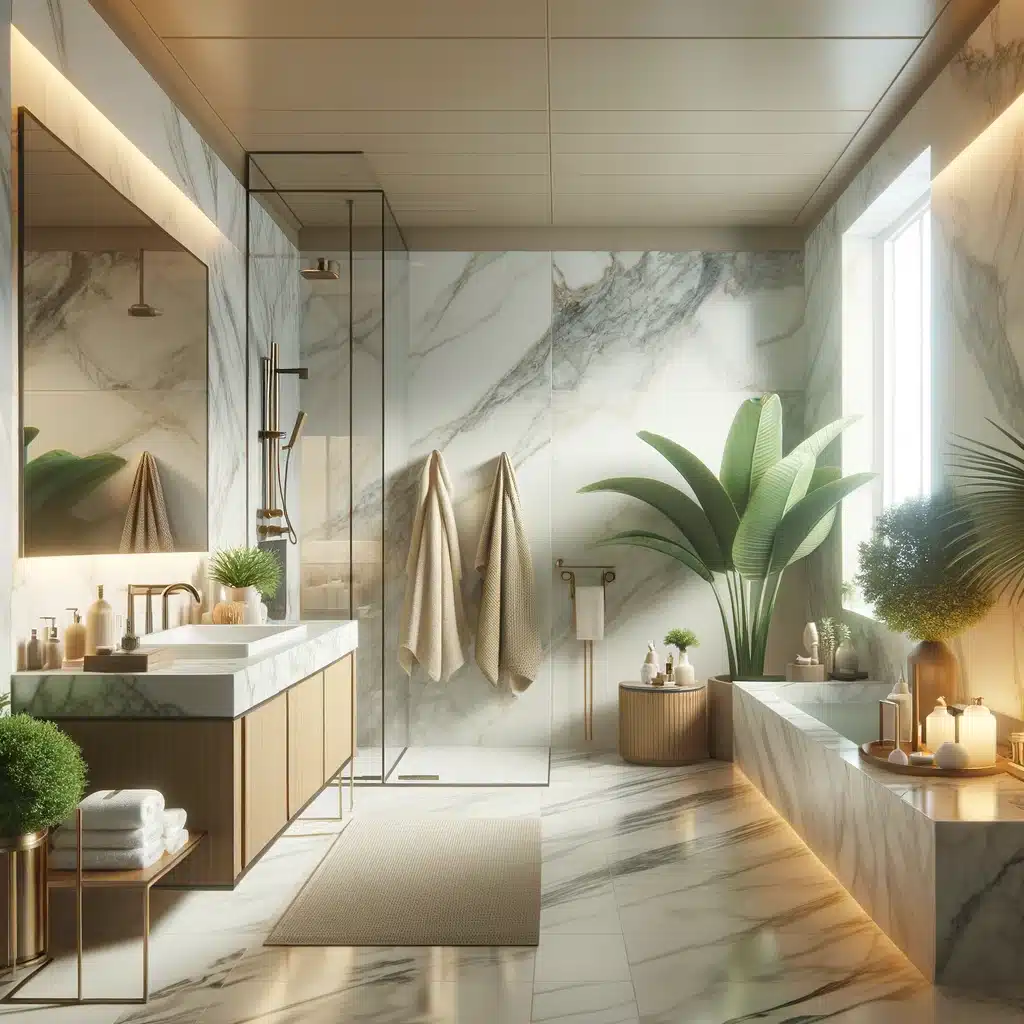Get a Good Looking Bathroom with Some Simple Tips

Creating a good-looking bathroom marries aesthetics with functionality, transforming a simple washroom into a sanctuary. I understand that it is one thing to dream of a beautiful, spa-like bathroom and another to implement those ideas into a cohesive design.
A well-designed bathroom needs to balance the desire for a visually pleasing space with practical considerations for daily use.

In my experience, successful bathroom design is achieved through a mixture of careful planning and a clear understanding of one's needs and preferences. Innovative use of materials, such as varied tile styles, can contribute to a space that feels both minimalistic and full of character. Additionally, the inclusion of elements such as upcycled vintage furniture for vanities introduces a unique charm without sacrificing storage solutions.
I also recommend considering the natural assets of the space. Positioning key elements like the vanity or the bath to take advantage of views can maximise the enjoyment of the room. At the same time, elements of privacy and light control must be maintained to ensure the bathroom remains a functional and comfortable space. By integrating smart design decisions with a touch of creativity, one can achieve a bathroom that is both good looking and tailored to the unique lifestyle of its users.
Design and Layout

I believe an exceptional bathroom merges aesthetics with function, creating a space that's both pleasing to the eye and practical to use. It is in the careful planning of design and layout where a good-looking bathroom truly takes shape.
Spatial Arrangement
I emphasise that the layout of a bathroom should prioritise flow and ease of movement. This can be achieved by considering the placement of fixtures and features. Toilets should be positioned out of direct line of sight, often tucked behind the door or a partition. Meanwhile, sinks are best located near the entrance for accessibility. When working with limited space, I suggest choosing a shower-over-bath combination to maximise the area's utility. A wet room design is a contemporary approach, where the shower area is seamlessly integrated with the rest of the room.
Light and Colour
The use of natural light can transform a bathroom, making it feel larger and more inviting. Strategic placement of windows or skylights is key. For artificial lighting, light fixtures should be both functional and decorative. Layered lighting with a combination of overhead and task lights around mirrors is beneficial. With colour schemes, I find that a contrast between light and dark hues adds depth and visual interest, while still allowing the space to feel clean and uncluttered. I typically lean towards neutral colours for their timeless appeal and the flexibility they offer in adapting to various themes.
Choosing a Theme
Deciding on a theme will guide the overall aesthetic and material choices in the bathroom. This could range from a vintage look with classic fixtures and subway tiles, to a more modern, minimalistic approach with sleek lines and monochromatic colour palettes. I focus on cohesion; ensuring all elements from tiles to towels are harmoniously aligned with the chosen theme. For those aiming for a luxury feel, material choices like marble countertops or high-quality metals can make a significant impact.
Essential Fixtures and Features
In crafting a good-looking bathroom, each fixture and feature plays a pivotal role in balancing both function and aesthetic appeal. My focus here is on the key components that define a bathroom's look and usability.
Bathtubs and Showers
For a modern bathroom, a bathtub can serve as the centrepiece, especially a freestanding tub that offers a touch of luxury. In contrast, for a traditional or farmhouse style, a claw-foot bathtub might be more appropriate. When considering showers, frameless glass enclosures are a sleek choice for contemporary spaces. I also recommend installing a dual shower head or a rainfall shower head to create a spa-like experience.
Sinks and Vanities
The sink and vanity area is essential in setting the bathroom's tone. For a chic and sophisticated look, I find that a white porcelain sink paired with a wood vanity strikes a beautiful balance. On the other hand, vessel sinks atop a sleek, floating vanity lend themselves well to minimalist or contemporary designs. Brass fixtures on the sink add a warm, timeless touch, which can work well in a variety of styles from modern to farmhouse.
Lighting and Mirrors
Optimal lighting is critical in a bathroom. I suggest integrating a combination of overhead lighting with wall sconces or pendant lights for an even distribution of light. Moreover, a well-lit mirror is non-negotiable for practical purposes. LED mirror options provide not only excellent task lighting but can also act as a statement feature. Always ensure that your chosen mirrors compliment the fixtures in terms of style and finish for a cohesive look.
Materials and Finishes
In designing a visually appealing bathroom, I understand the critical role of materials and finishes. The right choice can enhance durability, ensure safety, and contribute significantly to the overall aesthetic.
Floor and Wall Coverings
For floor and wall coverings, tiles stand out due to their vast range of options and functionality. Porcelain tiles are notably hardwearing and water-resistant, making them ideal for bathroom environments. For those preferring texture and a natural look, slate tiles offer a robust solution with their anti-slip properties and unique foliation. On the other hand, mosaic tiles bring diversity and vibrancy through various colours and designs. They work exceptionally well in creating feature walls or accenting areas within the bathroom. In terms of wallpaper, I recommend it for areas not directly exposed to water, as it can introduce intricate patterns and depth to the space.
- Tile Types:
- Porcelain Tile: Durable and low maintenance.
- Slate Tile: Naturally textured and slip-resistant.
- Mosaic Tile: Ideal for decorative accents.
- Other Coverings:
- Wallpaper: Suitable for dry areas to add visual interest.
Cabinetry and Worktops
When it comes to cabinetry and worktops, natural wood brings warmth and timeless elegance to the bathroom. It should be properly sealed with appropriate wood finishes to prevent moisture damage. The variety of finishes available allows me to tailor the cabinet surfaces to resonate with the bathroom's design theme—from glossy to matte varnishes. For worktops, durability is paramount. Here, re-purposing vintage furniture with a waterproof countertop can give the space a unique character while ensuring practicality.
- Cabinetry Materials:
- Natural Wood: Warm and classic; requires sealing.
- Finishes for Durability and Style:
- Wood Finishes: Glossy for a sleek look, matte for understatement.
- Worktop Considerations:
- Waterproofing: Vital for longevity.
- Upcycled Furniture: Adds personality and sustainability to the design.
Accessories and Decor
Decorating a bathroom is an excellent opportunity to combine both functionality and style. I find that starting with the essentials like bathroom mirrors and bathroom vanities is key; they serve as the focal points. I usually opt for mirrors that match the finish of the hardware to create a cohesive look, and I choose vanities that offer ample storage to keep the space tidy.
When it comes to soft furnishings, rugs can add a splash of colour and texture, not to mention they're a comfort underfoot on chilly mornings. It's important to select materials suitable for damp environments to prevent mould or damage.
I like to incorporate seating if space allows, such as a small stool or an ottoman, which can be both decorative and practical. It provides a place to sit or lay out clothing and adds an unexpected touch of sophistication.
For additional storage and display options, shelves are indispensable in my design approach. They can house a variety of items from towels to decorative objects, helping to personalise the space. Floating shelves, in particular, can give a modern and clean appearance.
Lastly, the right decor can elevate the bathroom’s aesthetic. I prefer to add items that are as functional as they are beautiful. For instance, a stylish bin or a ceramics collection can provide finishing touches without overwhelming the space.
- Key Accessories:
- Mirrors: Match with hardware
- Vanities: Ample storage, style complementary to the decor
- Rugs: Durable, moisture-resistant textiles
- Seating: Stool or ottoman for practical elegance
- Shelves: Floating for a sleek look
By mindfully selecting each piece, the bathroom becomes a testament to tasteful design and practicality.
